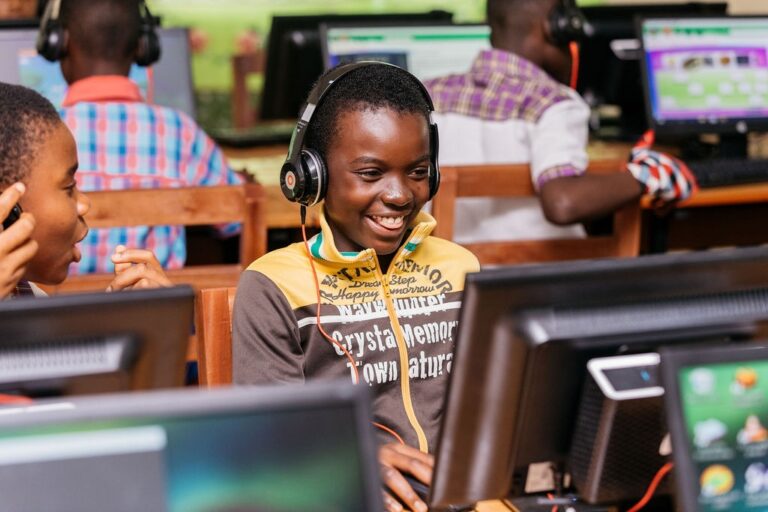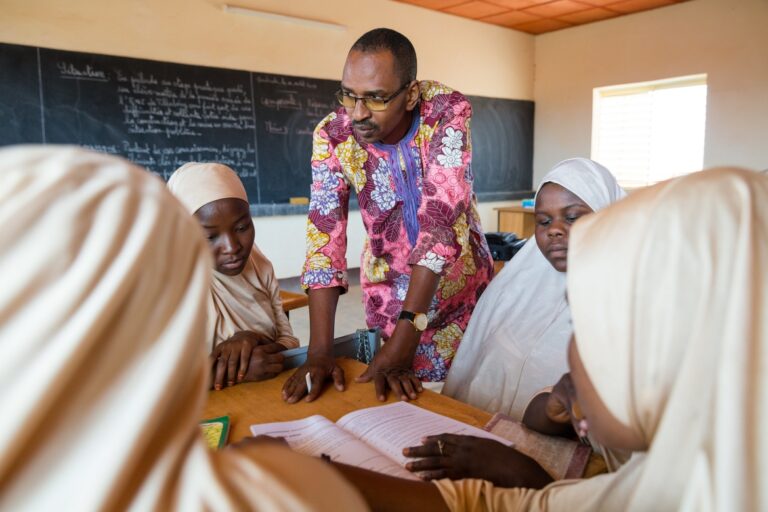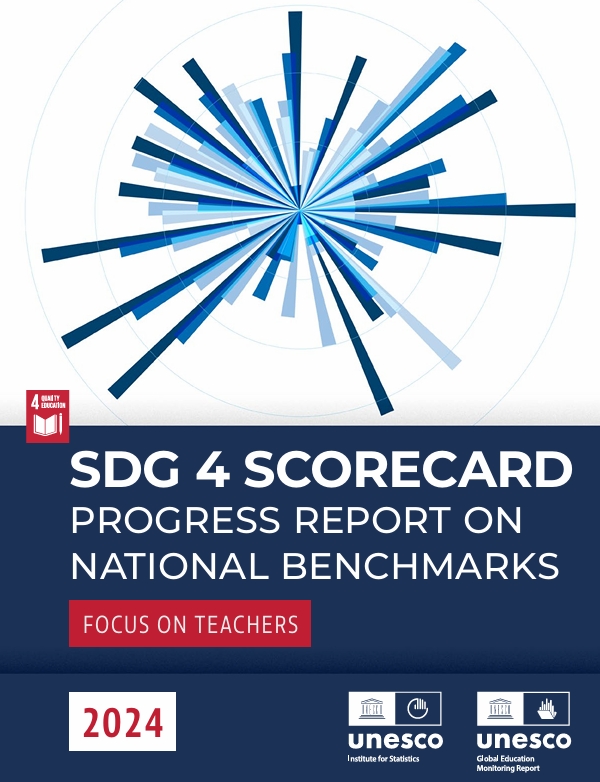By Gem Report, World Education Blog, 29 March 2018
UNESCO’s annual Mobile Learning Week provides a unique opportunity for policy makers, civil society organizations, teachers, students and academics to share knowledge, innovations and good practices in mobile learning. A key theme at this year’s event is the role of technology to address challenges created by displacement – and how to leverage it to deliver quick responses for populations on the move. This blog authored by Luke Stannard and Michaelle Tauson examines Save the Children’s efforts to use educational technologies in humanitarian contexts.

Yaarub and Sulafa in an animation workshop in Lebanon. © Save the Children
Quality and inclusion are two pillars of Sustainable Development Goal (SDG) 4 on education. With a growing need to address low learning outcomes and with an expanding population of displaced children at risk of having their education opportunities disrupted or cut, educational technology (EdTech) is increasingly proposed as a potentially effective response in humanitarian contexts.
 While many believe that new technology is inherently positive for education, there is little applicable evidence that is relevant for those engaging in education in emergencies. That said, there is nearly three decades worth of research into ‘what works’ in EdTech.
While many believe that new technology is inherently positive for education, there is little applicable evidence that is relevant for those engaging in education in emergencies. That said, there is nearly three decades worth of research into ‘what works’ in EdTech.
At Save the Children UK we felt that, if we cautiously cast the net a little wider, there were areas where research from more stable contexts could be used to inform practice in emergency settings as well. Our researchers spent eight months working to collate this evidence. The report, EdTech for learning in emergencies and displaced settings: a rigorous review and narrative synthesis, reviewed over 130 academic papers on EdTech’s impact on learning outcomes.
Consider how children learn using devices
EdTech devices are exciting new educational tools. Our findings show that like all tools it is how we use them, and not the tools themselves that improve learning outcomes. What matters is how the software works, or its pedagogy. When we consider how children use these EdTech devices we have to be critical of what they are learning.
Evidence shows that if the curriculum covered doesn’t complement what the child has learnt before then it will likely be forgotten. With regards to the curriculum it’s important that the examples in the software are culturally appropriate to the context of the learner. This is a challenge in emergency contexts, but by no means unachievable. Motivation was another key area aspect of the findings. EdTech can increase learner’s motivation levels, however if the software doesn’t react to the learner’s input and change the tasks based on this input then they will become demotivated.
Communities often know best what education programmes work for their children
The immediate community around the child is crucial to the successful integration of EdTech. Our findings consistently emphasized that facilitators have to be supported if the long-term aim is to improve quality learning opportunities, one of the reasons for this is children seek approval and support from adults. EdTech can’t currently replicate this support. To enable this the facilitators need to be engaged with prior to deployment, training on how to use the device needs to be provided and tailored to the individual context. This training can offer an opportunity to engage with these key actor’s opinions and attitudes towards technology use. It is not safe to assume everyone thinks EdTech is a good idea.
Appropriate infrastructure is a key enabling condition
Throughout the review process we found that without the effective evaluation of the infrastructure in place then EdTech will not improve learning outcomes. This is especially true in emergency, or conflict settings. Indeed, it can result in the hardware being a burden on the education providers as they have to keep the hardware safe.
Our review also found that there are myths around technology use. Gender is one such area, of the evidence covered we found nothing to support the myth that boys are better at technology than girls. However, we found that in some contexts access to technology can be gendered, with boys getting a greater chance to engage than their female counterparts. It has to be stressed that this is highly context specific.
A measured and evidence-led approach to EdTech engagement is needed
The greater time and planning given to interventions, prior to engagement, the greater chance that the education provision will be of high quality. The answer to effective engagement is likely to involve engaging three key stakeholders: the private sector, with its expertise and access to resources; humanitarian and development agencies with decades of experience working in these contexts; and the displaced communities.
Our focus must always remain on how best to provide education that can help children build the skills, the knowledge, and the confidence they need to become learners for life. To do so, we must be critical of how we are communally building opportunities for education. EdTech can be an important part of the wider effort of ensuring a quality education for all.
The forthcoming 2019 Global Education Monitoring Report on migration, displacement and education will build on evidence in the Save the Children review, as well as a report launched this week by UNESCO, to further discuss the role of mobile learning and technology to support education for migrants and refugees.






